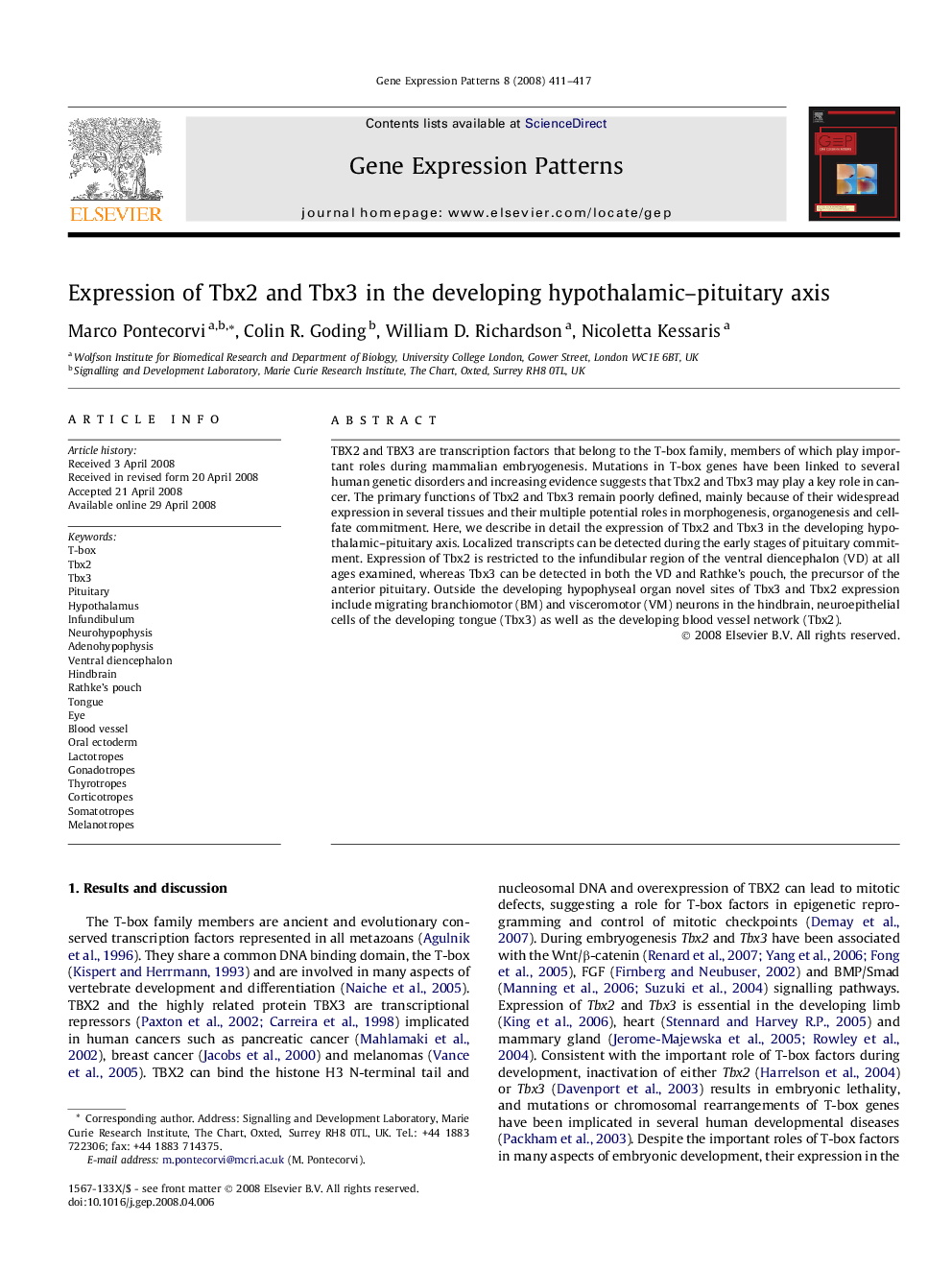| Article ID | Journal | Published Year | Pages | File Type |
|---|---|---|---|---|
| 2182225 | Gene Expression Patterns | 2008 | 7 Pages |
TBX2 and TBX3 are transcription factors that belong to the T-box family, members of which play important roles during mammalian embryogenesis. Mutations in T-box genes have been linked to several human genetic disorders and increasing evidence suggests that Tbx2 and Tbx3 may play a key role in cancer. The primary functions of Tbx2 and Tbx3 remain poorly defined, mainly because of their widespread expression in several tissues and their multiple potential roles in morphogenesis, organogenesis and cell-fate commitment. Here, we describe in detail the expression of Tbx2 and Tbx3 in the developing hypothalamic–pituitary axis. Localized transcripts can be detected during the early stages of pituitary commitment. Expression of Tbx2 is restricted to the infundibular region of the ventral diencephalon (VD) at all ages examined, whereas Tbx3 can be detected in both the VD and Rathke’s pouch, the precursor of the anterior pituitary. Outside the developing hypophyseal organ novel sites of Tbx3 and Tbx2 expression include migrating branchiomotor (BM) and visceromotor (VM) neurons in the hindbrain, neuroepithelial cells of the developing tongue (Tbx3) as well as the developing blood vessel network (Tbx2).
